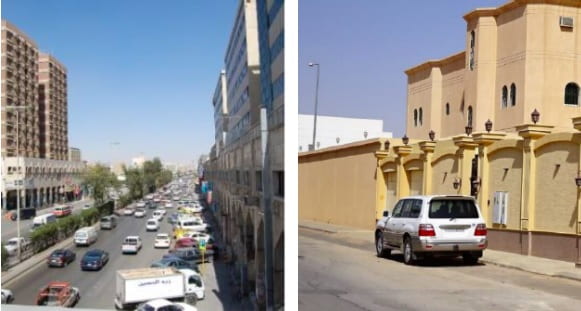
In the past four decades, the migration movement to cities has resulted in a booming population and a precipitous process of urbanization, which mostly happened at the expense of the green open spaces. In Riyadh, Saudi Arabia, the ratio of dwellings outweighs its public green spaces, largely because of the booming housing market and real estate and the absence of public policies and regulations. Accordingly, the green spaces – and the dedicated land for parks – are usually confined into abandoned, vacant lots. Therefore, the need for creating public green spaces, and maintaining the existing ones is very crucial to cope with climate change, increase in available green space and national park area per capita, elevate the quality of life and create a vibrant society.
The Ministry of Municipal and Rural Affairs and Housing (MoMRAH), is fully in charge of providing the services to each green/ public open space in all cities in Saudi. Nonetheless, maintaining the existing green spaces and the creation of new ones will need civic engagement and knowledge of laws and regulations on public green spaces, and granting the power and activating the local government at the same time.
 Image 1: Riyadh 1950 vs. Riyadh 2018 (Source: Arriyadh Development Authority, Green Riyadh Strategy)
Image 1: Riyadh 1950 vs. Riyadh 2018 (Source: Arriyadh Development Authority, Green Riyadh Strategy)
Riyadh has transformed from a small walled town to become the largest metropolitan city in the Kingdom with an increase in population from 400,000 people in 1970 to over seven million in 2020, according to projections by the United Nations. The regulation set by the Ministry of Municipal and Rural Affairs and Housing (MoMRAH) in Saudi Arabia (1996), specified that a park should be provided for every 2,500 to 5,000 people, and the allocated area is determined by a standard ranging between 2-10 meter square (m²) per person. The MoMRAH guidelines also indicate in the planning process that public open space needs to be included for its residents, which can encompass gardens, parks, walkways, plazas, roads, playgrounds, and parking lots.
Additionally, the public open space should not exceed 33% of the total area. Playgrounds allocated for every 20 residential blocks must meet a minimum of 400 m² in area. Moreover, at the neighborhood level, public open space should meet a minimum requirement of 5000 m² to provide five m² per capita for each resident. It is worth pointing out that MoMRAH prepared a master plan for the City of Riyadh in 1970 to contain the urban growth and control the development to create more public green spaces, but the master plan failed to create a sufficient amount of green spaces for Riyadh’s residents.
Despite the extensive efforts to maximize the public green spaces, the city still has a very low vegetation cover (1.5%), a very low canopy cover (0.41%), and a very low green open space per capita (1.7 m²), which is below the international health standard indicated by the World Health Organization (WHO) and adopted by UN-Habitat and Food Agriculture Organization. The minimum health standard indicates that a minimum availability of nine m² of green open space is needed per urban area inhabitant.
 Image 2: Streetscape in Riyadh (Source: Arriyadh Development Authority, Green Riyadh Strategy, 2018)
Image 2: Streetscape in Riyadh (Source: Arriyadh Development Authority, Green Riyadh Strategy, 2018)
To enhance the quality of life and the urban landscape in Saudi cities in general and to increase the green space per capita, Saudi Arabia announced the vision 2030 National Transformation Program (NTP) which highlights the importance of increasing the availability of Green Public Open Spaces and their accessibility. Several programs were established by the NTP to support the vision 2030 program, including the Green Riyadh project. It is the world’s largest greening project, which aims to augment the green cover in Riyadh by planting 7.5 million trees, using 72 local species.
The Green Riyadh project will be a paradigm shift for the Kingdom’s greening initiatives, as it will maximize the use of recycled water in irrigation from 90,000 cubic meters per day to one million. The project goals include enhancing walkability, establish nine m² of green areas per person and establish 64 public gardens and playgrounds to increase the green space per capita from 1.7 square meters to 28 m² and increase the total green space in the city to 9%.
However, to turn the vision 2030 into a reality, there will be a need to amend the law since the legal means granted to the Mayor (Muhafiz) and municipal committees is not enough to rehabilitate and rejuvenate the role of local municipalities (Amana) with respect to the public green spaces. Amending the law will focus on disseminating and cascade the responsibilities to the local authorities and giving them the capacity to act on with respect to restoring the green open spaces, as well as raising the awareness of citizens regarding green open spaces and improving the civic participation and engagement, which will play a unique role in improving the quality of life and creating more lively communities.
Cover Image Source: Green Riyadh Project Gallery